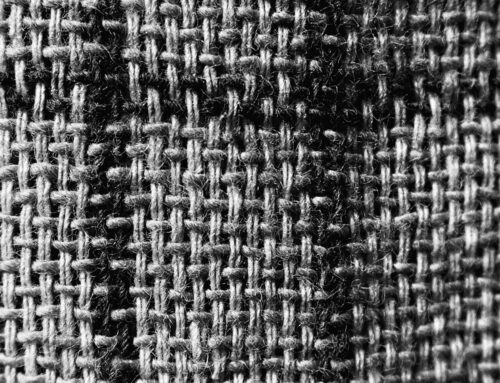When you buy a dress and you try it on in the shop in just the right size, but when you get home and wash it after many times, it becomes shorter and
shorter or longer and longer, what is the reason?
What is the fabric shrink?
Shrinkage is the change in the size of fabric after soaking or washing and drying
The size of shrinkage has a significant impact on the specification of garments or other textile articles, particularly fiber fabrics that tend to absorb
moisture and swell. When cutting garments, especially those made from two or more fabrics, the size of the shrinkage must be taken into account to
ensure the specification and wearability of the garment.
Why does fabric shrink?
On the one hand, the fabric is soaked in water, and the fiber absorbs moisture and swell, making the diameter of the yarns thicker and the bending of
the yarns in the fabric increase and squeeze each other tightly. Although the length of the fibers increases, the swelling is small, while the diameter
direction swells greatly, thus causing the fabric to shrink.
On the other hand, the fabric is inevitably stretched by the machine during the dyeing, printing, and finishing process, and there is tension present in
the fabric. when you wash them the internal stress relaxes and they return to their original size, so they shrink
6 reasons that affect shrinkage rate
-
Raw material
The shrinkage rate varies depending on the raw material of the fabric. Generally speaking, high moisture-absorbent fibers, like Natural cellulosic
fiber: cotton, linen, and Regenerated Cellulose Fiber(viscose, modal, bamboo, etc.)
Fiber expansion after immersion, diameter increases, length shortens, and the shrinkage rate is large. For example, some viscose fibers have a water
absorption rate of up to 13%, while synthetic fiber (polyester, polyamide, acrylic)fabrics have poor moisture absorption, and their shrinkage rate is
small.
And wool is due to the surface of the fiber scale structure and easy felting, affecting its size stability.
-
Density
The density of the fabric is different, the shrinkage rate is also different. For example, the warp and weft density of the same fabric is similar, and its
warp and weft shrinkage rate is also close. The more density of the fabric for the same materials same yarn count same process, the shrinkage is small
-
Yarn count
Fabric yarn count is different, the shrinkage rate is also different. The yarn count thick cloth shrinkage rate is large, yarn count fine fabric shrinkage
rate is small.
-
Fabric structure
In general, the dimensional stability of woven fabrics is better than knitted fabrics; the dimensional stability of high-density fabrics is better than
low-density ones. In woven fabric, the general shrinkage rate of plain fabric is less than flannel fabric; and in knitted fabric, the shrinkage rate of flat
needle organization is less than ribbed fabric.
-
Production and processing process
The fabric production process is different, the shrinkage rate is also different. Generally speaking, the fabric in the weaving and dyeing process, the
fiber is stretched many times, long processing time, the applied tension of the fabric shrinkage rate is large, and vice versa is small.
As the fabric in the dyeing, printing, and finishing process, will inevitably be subject to machine stretching, there is tension in the fabric. However,
the fabric in contact with water is easy to lift the tension, so we will find the fabric shrinkage after washing. In the actual process, we generally use
pre-shrinkage to solve this problem.
-
Washing care process
Washing care includes washing, drying, and ironing, each of these three steps will affect the shrinkage of the fabric. For example, the dimensional
stability of a hand-washed sample is better than that of a machine-washed sample, and the temperature of the wash will likewise affect its
dimensional stability. In general, the higher the temperature, the less stable it is. The way the sample is dried also has a greater impact on the
shrinkage of the fabric.
Common drying methods include the drip drying method, metal mesh flat method, hanging dry drying method, and rotary drying method. The drip
drying method has the least effect on the size of the fabric, while the rotary arch drying method has the greatest effect on the size of the fabric, with
the remaining two in the middle.







